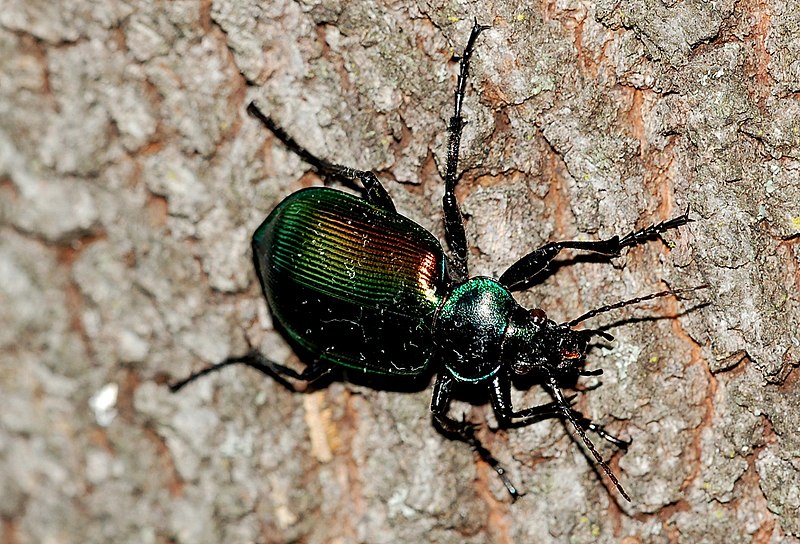Please see Part I of this article for information on other aspects of breeding the White’s treefrog (Litoria infrafrenata): distinguishing the sexes, preparation for breeding and egg-laying.
The Tadpoles
At 80-85 F, White’s treefrog eggs will begin to hatch in 24-40 hours. The tadpoles remain largely inactive for the first 1-3 days, during which time they should not be fed. Once they begin moving about, food should always be available.
While some have raised White’s treefrog tadpoles on simpler diets, I have been most successful when using a variety of food items. In some cases, tadpoles raised on 1-2 foods develop normally, but the froglets expire within a month or two of transforming. I feed White’s treefrog tadpoles tropical fish flakes, algae wafers, and kale, romaine, dandelion and other greens that have soaked in hot water for 10 minutes or so.
Transformation
Well-fed tadpoles will transform within a month or so of hatching. Some will invariably lag behind, and may remain within the tadpole stage for an additional 4-6 weeks.
The tadpole rearing tank should be well-stocked with live floating plants such as water lettuce, water hyacinth and pothos, and lit by a Reptisun 2.0 bulb (please see Part I of this article). The plants, and a gently sloping reptile basking platform will provide the metamorphs with easy egress from the water.
The Young Frogs (Metamorphs)
Rearing a large number of froglets can be quite a challenge. Overcrowding, especially in situations of limited air flow, rapidly leads to highly contagious fungal infections of the skin. Screen cages provided with numerous perching sites make ideal rearing enclosures.
Diet
Young White’s treefrogs usually feed vigorously, taking ¼ inch crickets, small waxworms, roach nymphs and similarly sized insects. If you are raising a large number of frogs, consider culturing flightless houseflies (available via biological supply houses). These insects are ideally sized, readily digestible and reproduce rapidly. The Zoo Med Bug Napper Insect Trap can be employed to help provide the frogs with important dietary variety in the form of wild-caught insects.
All insects offered the frogs should be powdered with vitamin/mineral supplements for the first few months following transformation.
The White Lipped or Indonesian Giant Green Treefrog (Litoria infrafrenata)
 Native to extreme northeastern Australia, New Guinea, Timor and the Solomon Islands, this striking relative of the White’s treefrog inhabits swamps, rainforests, farms and suburban yards. It is the world’s largest treefrog, reaching a snout-vent length of nearly 6 inches.
Native to extreme northeastern Australia, New Guinea, Timor and the Solomon Islands, this striking relative of the White’s treefrog inhabits swamps, rainforests, farms and suburban yards. It is the world’s largest treefrog, reaching a snout-vent length of nearly 6 inches.
White-lipped treefrogs tend to be high strung, and do not take well to handling. They should be housed in a large, well-planted terrarium provisioned with numerous perches and arboreal hideaways. This frog is less cold-tolerant than its plucky relative; ambient temperatures of 78-82 F by day and 74-76 F by night suit it well.
White lipped treefrogs may be bred as has been described for White’s treefrogs, but during the cooling-off period temperatures should be kept at 70 F during the night, and 74 F during the day.
Dietary variety for both adult white-lipped treefrogs and their tadpoles seems to be of even greater importance than is the case for other frogs. The metamorphs invariably develop skin problems if crowded or kept without adequate air circulation.
Further Reading
You can read more about the natural history and captive care of the white-lipped treefrog on the web site of the World Association of Zoos and Aquariums.
Image referenced from Wikipedia and originally posted by PicTrans.
 That Reptile Blog – Reptile, Amphibian and Exotic Pet Care and Information
That Reptile Blog – Reptile, Amphibian and Exotic Pet Care and Information

 Caterpillar hunters exhibit many qualities that render them ideal terrarium subjects. They are large, bold, diurnal, brightly-colored, voracious predators, temperature-hardy and breed well. Despite this, like most US natives, they receive virtually no attention from hobbyists. Caterpillar hunters are, however, much in demand elsewhere – on my last visit to Japan, entomologists at the Tama Zoo (which hosts a huge building and an outdoor exhibit for insects) assured me they would accept all that came their way.
Caterpillar hunters exhibit many qualities that render them ideal terrarium subjects. They are large, bold, diurnal, brightly-colored, voracious predators, temperature-hardy and breed well. Despite this, like most US natives, they receive virtually no attention from hobbyists. Caterpillar hunters are, however, much in demand elsewhere – on my last visit to Japan, entomologists at the Tama Zoo (which hosts a huge building and an outdoor exhibit for insects) assured me they would accept all that came their way. Caterpillar hunters make fascinating terrarium subjects. Clad in beautiful iridescent colors, most are not at all shy about revealing a range of interesting behaviors. They do well at normal room temperatures and can be housed in planted terrariums or simple
Caterpillar hunters make fascinating terrarium subjects. Clad in beautiful iridescent colors, most are not at all shy about revealing a range of interesting behaviors. They do well at normal room temperatures and can be housed in planted terrariums or simple